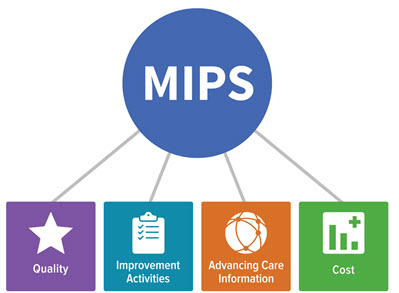Peruse These 7 MIPS Tips for Smaller Practices
Know where to find tools that can facilitate success in the QPP. The key to avoiding penalties and maximizing your chances of positive Medicare payment adjustments is being skilled at navigating the nuances of the Merit-Based Incentive Payment System (MIPS). While submitting MIPS measures can be taxing for any practice, smaller practices might have a harder time with MIPS than larger ones. Why: Staff shortages and budget constraints tend to affect smaller practices the most, so compiling the necessary MIPS data may pose challenges; but there are resources and guidance to help small practices meet the requirements. The Centers for Medicare & Medicaid Services (CMS) realized the complexity associated with the MIPS program and the importance of incentive payments for quality care — especially for small practices. With Traditional MIPS and MIPS Value Pathways (MVPs) running concurrently for performance year 2023/payment year 2025, the agency has beefed up its small practice assistance with safeguards and flexibilities to better ensure providers’ success. Check out these seven items that can bolster your PY 2023 MIPS experience. 1. Bookmark the small practices portal on the Quality Payment Program (QPP) website. If you haven’t scoped out this QPP feature, now is a good time to skim through the offerings. CMS provides links to downloadable guidance, general MIPS information, and small practice specifics. Because the QPP online resources are vast and clunky, having this option to go directly to small practice details without sifting through myriad data is critical. 2. Register for the QPP Small Practices Newsletter. This handy resource is chock full of information from measures changes, program updates, and deadlines. However, there’s a caveat — the resource isn’t readily available on the QPP website. In order to get the update, you must sign up for the monthly newsletter. One nifty feature CMS offers in the newsletter is its “at-a-glance” calendar. “Each month, we share required and recommended activities for small practices to support their successful participation in QPP,” the newsletter says. “The activities follow a rolling quarter approach, letting you see activities for the previous month, the current month, and the following month. 3. Use the tools to figure out if you are required to participate. Before you dive in and start amassing measures and data to submit, determine if you’re eligible via the QPP portal with your National Provider Identifier (NPI). If you’re part of a small practice, you have four criteria to meet in order to participate, which include the following: 4. Understand that MIPS eligibility is fluid. Another important point to consider is changes in MIPS eligibility during the course of a performance year. For example, if a provider changes practices or reports under different specialty types between segment 1 and segment 2, that could alter their eligibility. Also, “you won’t be eligible to participate if you fall below all 3 elements of the low-volume threshold in segment 2 of the MIPS Determination Period,” QPP guidance reminds. According to CMS, other reasons your status might change include opting out of an APM entity during PY 2023, QP changes from one snapshot to the next, stop billing Part B claims under the practice Tax Identification Number (TIN) during segment 1, or not have Part B claims in segment 2. 5. Familiarize yourself with the MIPS flexibilities for small practices for PY 2023. CMS wants to see more small practice participation in the QPP — and continues to minimize the requirements, making it easier to be a part of MIPS. For PY 2023, small practices can count on these policies: 6. Remember there are three reporting paths and five participation options for PY 2023. MIPS-eligible clinicians have three distinct ways to report their measures and five possible participation paths. Here’s where it gets tricky — your participation option will dictate the reporting path. Here’s a breakdown of the various reporting and participation options: 7. Stay on top of the deadlines. With all the resources available to small practices, you should be able to plan out your various MIPS filing and review deadlines. Bookmark this QPP timeline link for PY 2023 for reference at https://qpp.cms.gov/ resources/deadlines. Resource: Check out the small practice page with links to sign up for the newsletter, auxiliary FAQs, resource and implementation guides, and more at https://qpp.cms.gov/ resources/small-practices.





